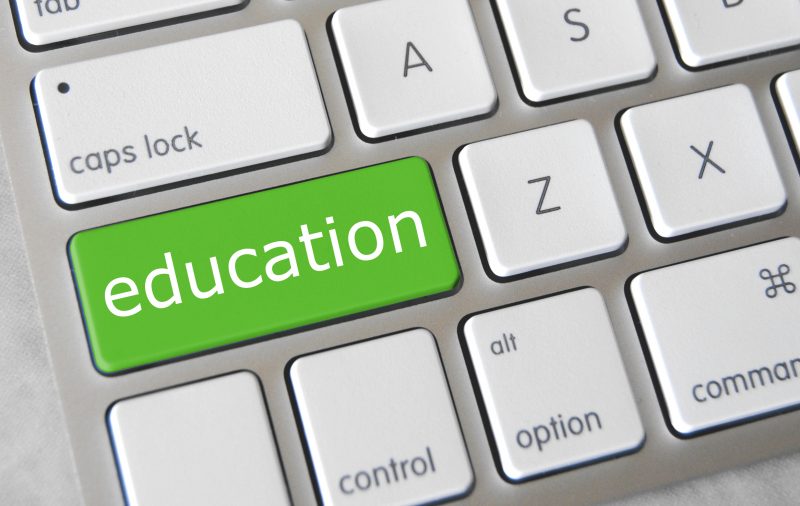By and large, expats in Indonesia send their kids to private international schools.
If your family is coming from a semi-developed market with a halfway decent education system – and you earn at least a mid-level salary – private education in the nation is likely the only option that makes sense.
Global Business Guide says private international schools are undoubtedly on the rise in Indonesia. This applies to both local and foreign students, and according to the France-based investments portal, a superior education is in high demand in the nation’s vibrant economy, where tens of millions join the job market every year. Competition is particularly high for positions at multinational corporations, making a reputable degree a de facto prerequisite for fresh graduates to be taken seriously.
Schools in Indonesia are run either by the government or by private operators. Some private schools refer to themselves as ‘national plus schools,’ which means that their curriculums go beyond the requirements put forth by the Ministry of Education, such as the use of English as medium of instruction or by having an international-based curriculum instead of the national one.
According to data from the World Bank, there are more than 250,000 schools in the archipelago, but private schools do play an important role. While only 7 percent of primary schools are private, the figure increases to a staggering 56 percent at the junior-secondary level and 67 percent at the senior-secondary level.
The Law on National Education (No.20/2003) and the Constitution Amendment III emphasize that all Indonesian citizens have the right to an education. The government has an obligation to finance basic education without charging fees, and in effect, the government is mandated to allocate 20 percent of its expenditure to education.
The country also recently implemented the Indonesia Smart Card programme, which allows poor students to study in public schools for free until high school.
But in the country’s remote and rural areas, policy makers and industry stakeholders are hard-pressed to provide universal access to basic education.
This makes the overall quality of public education in Indonesia suffer dramatically. In other words, while public schools in DKI Jakarta may have decent quality, the same cannot be said for their rural Sulawesi counterparts.
Since the 1970s, Indonesia has increased its primary and junior-secondary enrolment rates substantially. In the past ten years, it has narrowed the gap in school completion rates between rich and poor students and between those from rural and urban areas. Since 2009, the government claims to have allocated a fifth of its annual budget to education as required by law. However, it’s important to note that this is not taking into account instances of graft and corruption in the education space.
But with all of this in mind, according to data from The Economist, progress in public education has more variables and caveats than merely funding issues. Primary enrolment rates in affluent districts (think Bumi Serpong Damai) are close to 100 percent. In some poorer districts (think Gorontalo Province), they remain below 60 percent. The number of teachers across the nation are also disproportionately distributed.
In terms of rural schools being understaffed, in recent years, former Minister of Education Anies Baswedan (current candidate in Jakarta’s gubernatorial election) told the business media, “[if a school is near a main road] I can guarantee it has more teachers than it needs. But if it’s two or three kilometres from that road, it won’t have enough.”
To overcome the uneven teacher distribution, in recent years, the Ministry of Education and Culture pledged to work closely with local governments at the provincial, city and district levels to improve teacher allocation in needy areas.
“If the teacher allocation can be optimally managed, areas that have a surplus of teachers can be transferred to nearby districts,” said Muhammad Hamid, Director General of Primary Education at the Ministry of Education and Culture.
Additionally, when looking at the nation as a whole, public school teachers are under-trained for their roles. According to a report by USAID, only 60 percent of the 1.85 million elementary school teachers in Indonesia have bachelor degrees.
According to the 2015 Programme for International Students Assessment (PISA) survey from Organisation for Economic Co-operation and Development, Indonesia’s 15-year-olds scored far below the median average for competency in science, with reading, mathematics and collaborative problem solving as minor areas of assessment.
For these reasons and more, a growing number of parents are happy to consider paying for private international education or ‘national plus’ schools to maximize their kids’ post-graduate opportunities in the country’s increasingly globalized economy.
However, it’s important for parents to do their homework. A lack of legal framework for what private and international schools are allowed to set as benchmarks can sometimes lead to a disparity in education quality. With the government also throwing its hat into the ring in certain cases, confusion may arise.
In 2014, the Education Ministry issued a regulation that said Indonesian-owned international schools must remove the international from their name, while Indonesian students at these schools will be required to study several additional subjects and participate in the same national examinations that students of state schools must undergo. The mandate was unclear, and only a handful of schools were affected, including Jakarta International School, which has since rebranded to Jakarta Intercultural School. Regulations like this and others have caused some confusion over the years about which schools are indeed private.
If you are new to Indonesia and care about how your child’s early education will affect her ability to compete on a global level, it would be wise to take a closer look at the school you’re leaning towards.
Regardless of what the government is saying in any given year, the important part is to understand the school’s track record. Make sure it has the proper international accreditations, and if you can, try to get verified statistics on which universities the school’s students end up at after graduation. These actions, along with cultivating relationships with teachers and staff, should help you make an informed decision.
Also Read A Shortlist of Indonesia’s Best International Schools




